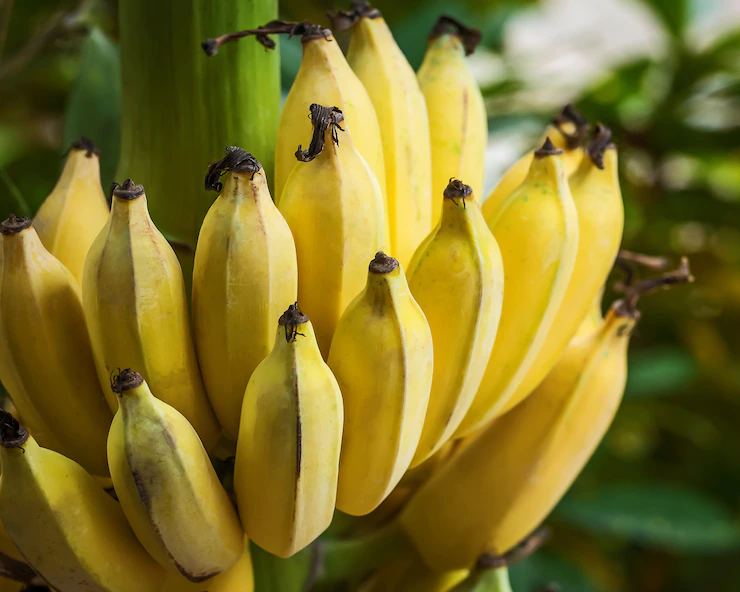When growing bananas in South Africa, there are several infections and diseases that you should be aware of in order to protect your crop. Here are some common ones:
- Panama Disease (Fusarium wilt): This is one of the most devastating diseases affecting bananas worldwide. It is caused by the soil-borne fungus Fusarium oxysporum f. sp. cubense. The disease can persist in the soil for many years and can cause severe damage to banana plantations. The Fusarium wilt-resistant varieties should be considered, and proper sanitation and crop rotation practices are essential to prevent its spread.
- Black Sigatoka (Mycosphaerella fijiensis): Black Sigatoka is a fungal disease that affects the leaves of banana plants. It causes characteristic black spots on the leaves, which can merge and eventually kill the foliage. This disease can significantly reduce the productivity and quality of the fruit. Regular fungicide applications and cultural practices like pruning infected leaves can help manage Black Sigatoka.
- Bunchy Top Disease: Bunchy Top is a viral disease transmitted by banana aphids. Infected plants exhibit stunted growth, with small and deformed leaves that give the plant a bunchy appearance. There is no cure for Bunchy Top disease, so prevention and control involve promptly removing and destroying infected plants to prevent the spread to healthy plants.
- Banana Bacterial Wilt: This bacterial disease, caused by the pathogen Xanthomonas campestris pv. musacearum, leads to wilting, yellowing, and eventual collapse of the plant. It can spread rapidly through contaminated soil, tools, and planting material. Implementing strict quarantine measures, using disease-free planting material, and avoiding the movement of infected soil are crucial to prevent its spread.
- Nematodes: Several nematode species can affect banana plants, including the burrowing nematode (Radopholus similis) and the root-knot nematodes (Meloidogyne spp.). These microscopic worms can cause root damage, leading to stunted growth, reduced yield, and increased susceptibility to other diseases. Crop rotation, use of nematode-resistant varieties, and soil management practices can help manage nematode populations.
It’s important to note that this list is not exhaustive, and there may be other infections and diseases specific to certain regions or specific cultivars of bananas. When growing bananas, it is advisable to consult with local agricultural extension services, plant pathologists, or experienced banana growers in your area for up-to-date information and guidance on disease management practices.
Join 'Farmers Mag' WhatsApp Channel
Get the latest Farming news and tips delivered straight to your WhatsApp
CLICK HERE TO JOIN






